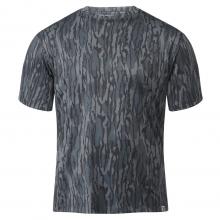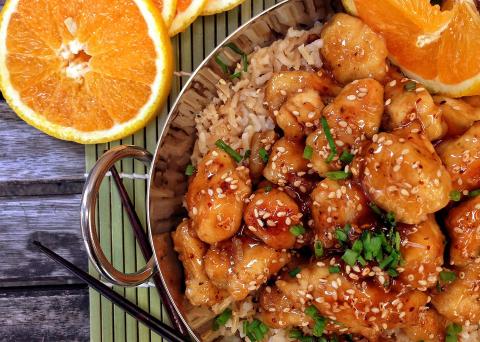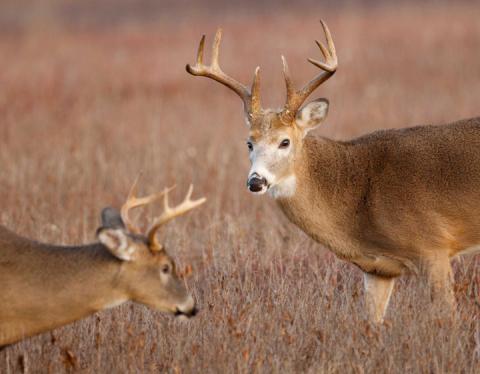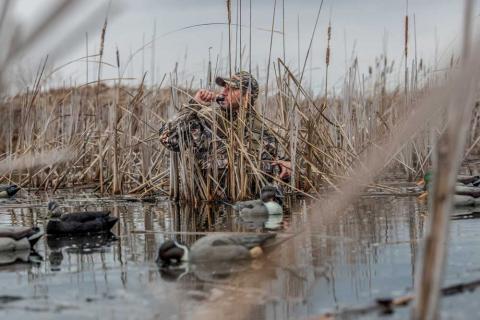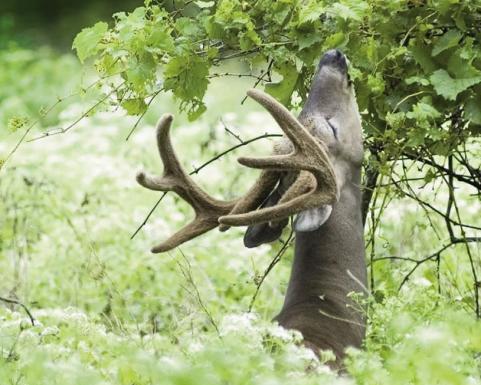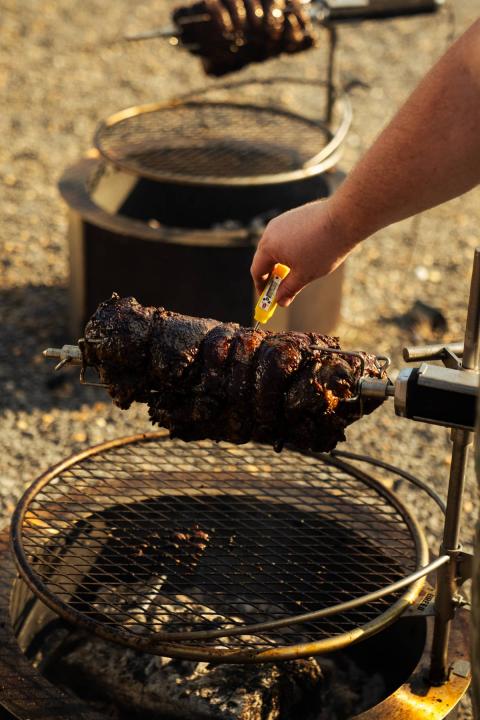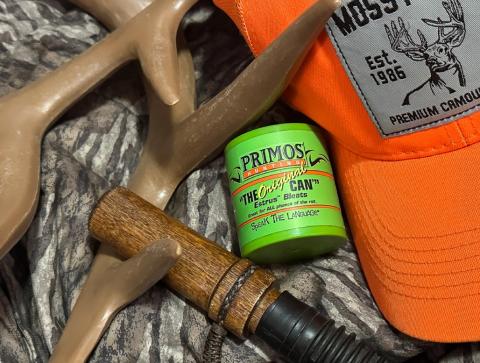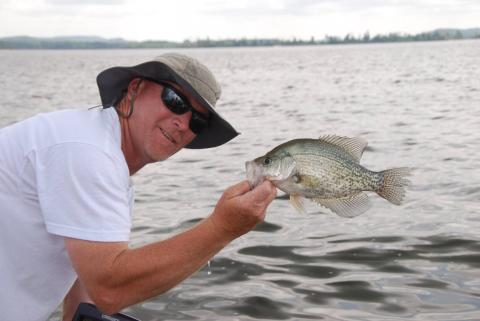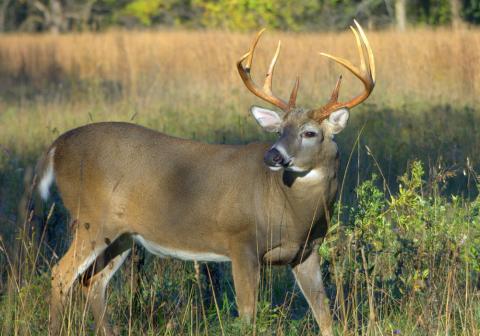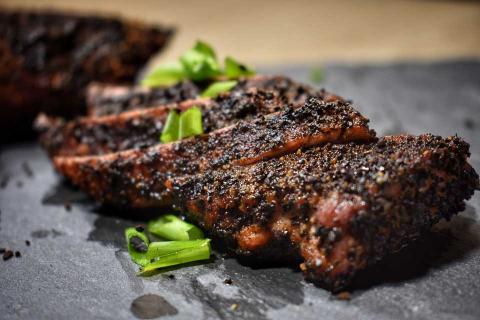Todd Amenrud | Originally published in GameKeepers: Farming for Wildlife Magazine
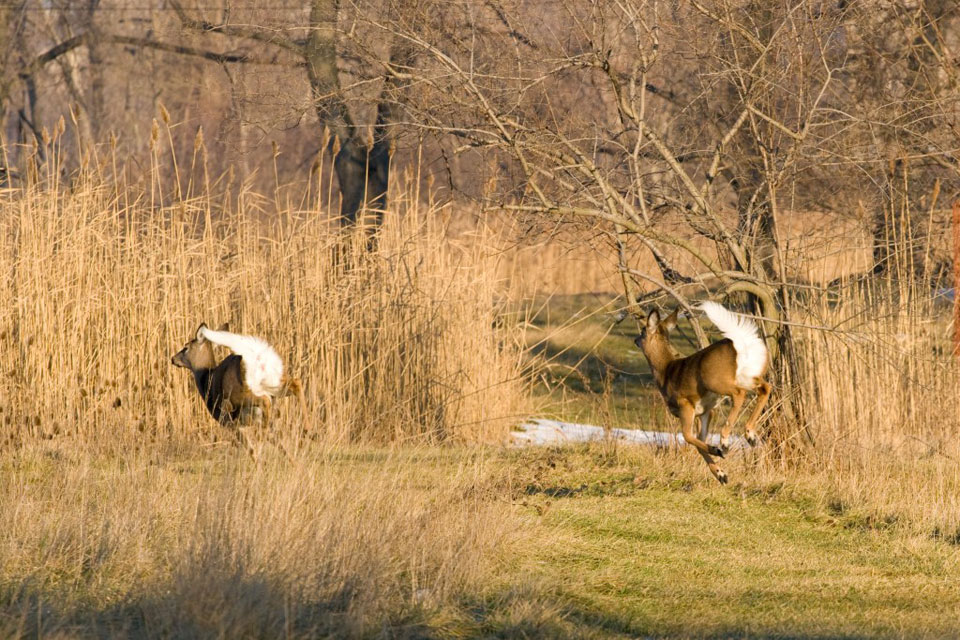
All of us who follow sound QDM principles know that you want a balanced sex ratio and a balanced age structure for your herd. But few really understand all of the reasons why. Most realize when you have a balanced sex ratio there’s more competition amongst the bucks and that normally means better hunting and typically better genetics passed along. If you don’t have this balance, you’ve been missing out on intense rut activity like you’ve only dreamed of — antlers everywhere and mature bucks abound. But that’s your gain. What about the deer? Besides the competition creating an environment where better genetic traits are passed along, the stability offers other big benefits to your herd, ones that many managers may not realize.
How many does can a buck breed before becoming seriously depleted? My personal research on humans has found that it’s just “one time,” and then I’m ready for a long nap and a good meal, or just leave me alone and let me watch football on the couch. Luckily, we don’t also have to burn the tremendous amounts of energy necessary to contact our “date” either. Imagine having to chase her for 12 miles, burning thousands of calories and getting the “back-hand slap” the first 20 times you approached her because everything wasn’t “just right.” We’re lucky because for whitetails that would be a serious problem, especially in the north where it turns from deer breeding season straight into the winter season over a period of a couple of weeks.
According to Shorty Flees, of Wilderness Whitetails in Wisconsin, a whitetail buck can breed about seven or eight does (in the wild) before becoming severely depleted. Shorty, his brother and mom grow some of the world’s largest bucks and have paid very close attention to this issue over the years. For good reason, you obviously want to pass the genetics of a giant whitetail buck along, but you don’t want to stress the buck so his antler growth suffers. So at Wilderness Whitetails, they will limit a “breeder buck” procreate with about 10 does (remember, not in the wild).
Shorty says, “In a controlled environment like ours, we feel a mature buck can breed 10 to 12 does per year before running himself down and hurting his body condition, which in turn hurts his antler growth the following year. A younger buck can generally handle breeding six to eight does before running himself down too much. In the north, where ‘old man winter’ sets in by the time deer breeding season ends, bucks become very vulnerable. They cannot build their bodies back up after the rut so they basically just try to maintain until spring. Come spring, if a buck is run down, Mother Nature diverts nutrients to rebuilding their body first. Until those needs are satisfied, the antlers get robbed of the nutrients they need to grow to their maximum potential. So bucks that come into the spring depleted are playing catch-up rather than reaping the nutritional rewards that spring has to offer.”
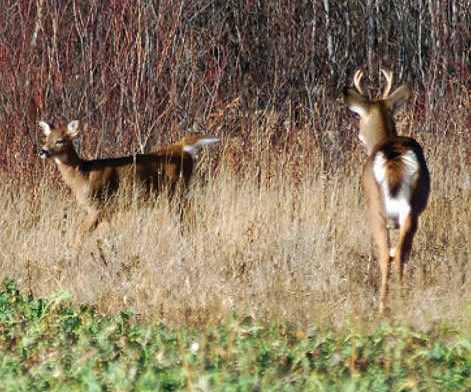
With an imbalanced sex ratio, many of the younger bucks will breed your does. Besides the obvious fact that inferior genetics could be passed on to deer populations (we can’t tell his genetic potential until he’s older), this is very bad for the young buck. Would you want this buck breeding your does? Of course, Shorty’s deer herd lives a charmed life. There are no predators to avoid, no cars to dodge and food is easy to come by. In the real world, a deer herd has all these things and more to stress about every day.
Alright, so back to the hunting – with a balanced herd, the bulk of the breeding takes place over several weeks with a “peak” that lasts about 10 days. With an abundance of does, the breeding may be spread out over many weeks, what some call a “trickle rut.” With a balance, you have an intense rut and the “chase segment” — what most people refer to as the “peak of the rut” (when bucks are up actively chasing does) — which is extreme and concentrated over a few days of some of the best hunting you can imagine. Hunting can be just as great for you as you see when watching hunters bowhunting in Georgia on the hunting shows on the Pursuit Channel.
With an imbalanced sex ratio, when the does dramatically outnumber the bucks, not all the does will be bred during their first estrus cycle. A doe comes into heat for about 36 to 48 hours. If there’s not a buck available to breed her, because he’s off tending to the other does in the herd, she goes without conceiving. She will come into heat 28 days later, and if she’s not bred that time, she’ll come into heat again 28 days after that. So not only is this extremely bad for the bucks in your herd, think about the poor fawns! Rather than being born in May with the other fawns, he is born in June — or even July! Do you think he’ll survive? If he does, he’ll always be inferior to the others.
Just because does are not bred during the first rut doesn't mean they weren't chased. If they wait until a second or third rut to breed, they can go into a harsh winter exhausted and depleted. They are also nursing during the warm days of early summer. When it comes time to wean the fawn, the lush forage of early spring is gone. It can be a tough go for does bred late.
When the does severely outnumber the bucks, some of the one-year and two-year-old bucks will be doing some breeding. Besides the possibility of inferior genetics being passed on to deer populations (we really can't tell until the buck is older), this is very bad for the young bucks. Normally with older, breeding-age bucks around to socialize with and months of interaction with every buck in the area, the younger bucks know their place and don’t attempt to breed, or at least are much less involved in the breeding activity. Without older bucks around, the younger bucks will lose body weight and have a high likelihood of being injured. The imbalance is bad for all deer.
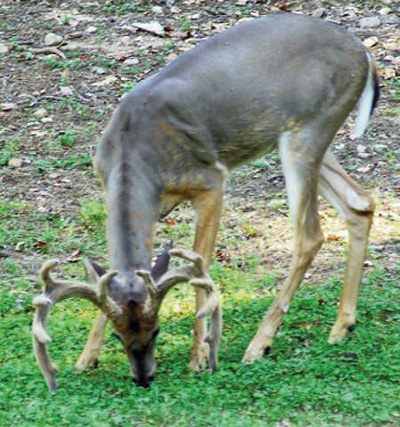
winter. In the spring if a buck is run-down, nutrients are
diverted to rebuilding their body first so antler size will
suffer. This buck obviously isn’t suffering.
Why don’t those silly bucks stop by the plot for a quick bite? For some reason, bucks just stop eating for a period of a couple of weeks surrounding breeding season. They don’t “completely” stop, but food intake with bucks in captive herds dropped approximately 90 percent during that period! So even if you make them a nice, tasty “food plot meal,” it really doesn’t make any difference during this period. They’re only eating 10 percent of what they usually do. Luckily, the “tail” that they’re searching for should be pounding your food plots so they (food plots) are still a great draw for both bucks and does. Research has shown that even with a balanced herd, even with ample food, a buck will lose 25 percent to 30 percent of their body weight during the rut. Imagine what a buck goes through when the rut is long and drawn out and they don’t have quality food available. Their need to breed is so extreme that it consumes their life. So not only is balancing your herd important, but having a quality food source available to help them recoup from rut-related stress is also key.
Besides the obvious stress that breeding and defending territory puts on an adult buck, there are many reasons to manage the herd by balancing your sex ratio. With a shorter rut, more does conceive over a shorter period which means fawns are dropped within a shorter timeframe as well. The influx of new fawns means predators are overwhelmed with the amount of prey and that means predators catch a smaller percentage of fawns. When the rut is drawn out, fawns are born over a longer stretch and predators have a chance to hone in on the newborns.
Achieving the balance can seem difficult. In severe cases, “trigger finger management” can take several years to “right the ratio.” It can take several hunting seasons to harvest enough does to make a dent and we may have to battle natural whitetail dispersal and, in some cases, state regulations or uneducated neighbors.
Dispersal in the whitetail deer world typically has the buck yearlings searching out a home range a fair distance away from where they were born. Some view this as Mother Nature’s way of preventing inbreeding in the herd. But the doe yearling usually takes up a home range right next to and usually intertwined with her adult doe mother. So if you remove a doe, there’s a 50:50 chance that spot will be replaced by another doe. Aggressive action may be required.
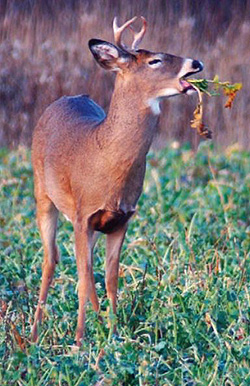
herd going into the rut will help them
to “weather the storm.” This buck
looks like he’s choking on the
brassica, but he’s actually tossing it
around to get a better angle on it to
fit it in his mouth. He picked the
entire plant and after repositioning it
a couple times he devoured it all.
Some states and provinces make it difficult and “handcuff” hunters with their regulations. In many cases, you can only obtain a limited amount of tags. Some MNR (Ministry of Natural Resources) agencies in Canada are still managing their deer herd like it’s the 1970s. You can purchase one buck tag — that’s it. I imagine it would be difficult to control doe numbers in this case.
I’m sure there are other great states, but just from my experience, the states of Missouri and Wisconsin have excellent programs — inexpensive, or in some cases free harvest tags, and food-shelf programs to deal with the abundance of harvested does. They make it easy to control numbers and give hunters a chance to help the community by bolstering food shelves with a proper doe harvest.
In other cases, you have neighbors who are difficult to deal with, or let’s face it, in some cases even stupid. With neighbors who aren’t “on the same page,” even if you harvest lots of does, it seems more just pour over the fences to fill the vacated spots. It is becoming easier to convince people of QDM, but you still have some uneducated hunters (typically older hunters) who have the “never kill a doe” mentality. Back in the ’70s with populations very low, letting the does live was the right call, but in most areas, it’s not the right call anymore.
In addition to a good buck-to-doe ratio, providing quality forage for the deer herd is also important. Quality food sources are especially important when natural forage is limited. Up north, the herd is trying to recover from the rut, and there is not a lot of natural forage. Ensuring food plots and water are available in the winter and hot summer months can make a big difference in how the herd prepares and recovers from the rut.
You can make a difference! “Stick to your guns!” If you have a sound deer management plan, things will rebound. It may take several years of aggressive doe removal and providing quality food sources, but it can be done. I’ve seen it accomplished in many states, countless times. And you will not believe the difference in hunting, especially during the rut! Mature bucks are up on their feet during the rut and the chase is intense. Your herd will also be much better off.






